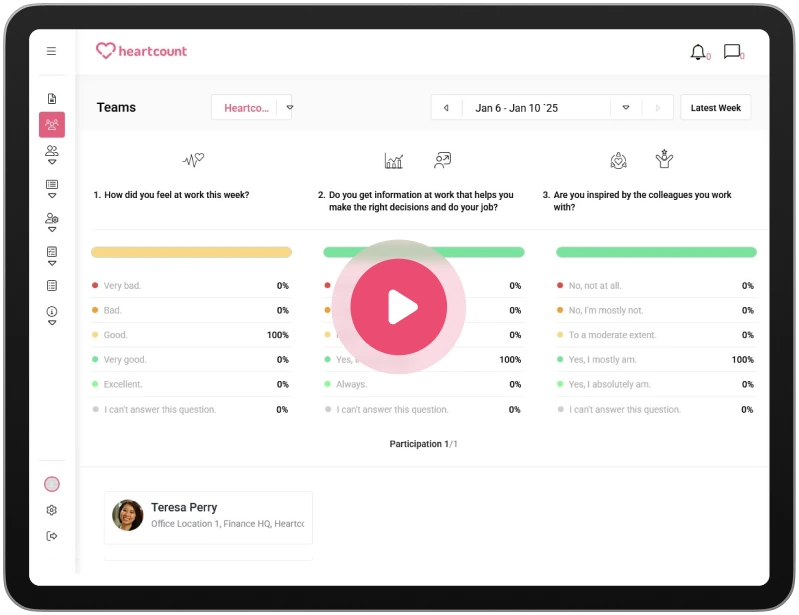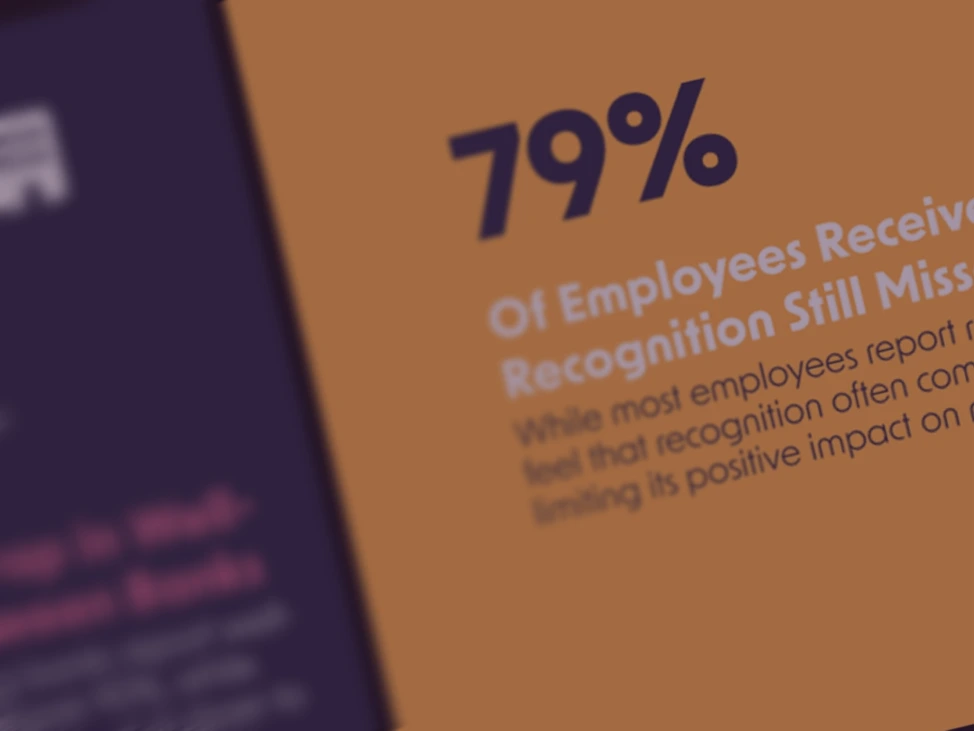Employee Engagement and Happiness: What Should You Measure?

HR management is often confused about which is better for employee productivity and final business outcomes — employee engagement or happiness.
They believe that people can be happy at work without performing well, whereas employee engagement leads directly to better performance and increased productivity. So, employees can be happy and unproductive. On the other hand, engaged employees care about their work and results.
Does this mean companies should just measure employee engagement?
Considering people’s emotions are essential to health, relationships, and workplace culture, the link between employee engagement and happiness is a bit more complex.
Focusing solely on engagement or happiness is illogical and can affect your business in the long run.
-
1.Understanding the Terms Employee Engagement and Happiness
-
2.Importance of workplace happiness
-
3.Can an unhappy employee still be engaged?
-
4.Reciprocal relationship between employee engagement and happiness
-
5.How to measure employee engagement and happiness
-
6.Improving employee happiness and engagement with technology
HR management is often confused about which is better for employee productivity and final business outcomes — employee engagement or happiness.
They believe that people can be happy at work without performing well, whereas employee engagement leads directly to better performance and increased productivity. So, employees can be happy and unproductive. On the other hand, engaged employees care about their work and results.
Does this mean companies should just measure employee engagement?
Considering people’s emotions are essential to health, relationships, and workplace culture, the link between employee engagement and happiness is a bit more complex.
Focusing solely on engagement or happiness is illogical and can affect your business in the long run.
Understanding the Terms Employee Engagement and Happiness
Employee engagement can be defined as the extent to which employees
- feel passionate about their jobs,
- are committed to the organization, and
- put discretionary effort into their work.
On the contrary, happiness at work refers to how employees feel good about their jobs.
Though both are rooted in emotions, they have a fundamental difference.
Engagement concerns the work rather than other factors, such as interpersonal relationships with colleagues or workplace perks. It’s not merely about overall feelings but how employees perceive their tasks, their level of commitment at the workplace, and the extra effort they put in.
For example, a happy employee can enjoy collaborating with teammates or the work environment but may not necessarily contribute more than the minimum required to business outcomes.
So, happiness in this context reflects how an employee feels about work generally, while engagement demonstrates an emotional commitment and investment in the work itself.
Importance of workplace happiness
Employee happiness has a big impact on your company’s reputation and influences employee satisfaction, well-being, and organizational success.
According to Hibob’s report, 69% of employees will reject a job if find out that current employees are generally unhappy in that company.
By creating a happy workplace, you can see far-reaching benefits in various areas:
- Employee retention: An unhappy employee is more likely to leave the company as soon as he/she finds a better opportunity. That’s why, organizations that nurture employee happiness reduce employee turnover rates, save on recruitment and training costs, and gain a competitive edge in the job market.
- Lower absenteeism: As happiness at work is linked with different mental and physical health, employees who are happy at work are less likely to take sick days or unplanned leave. So, happiness at work improves overall attendance and consistent workflow.
- Stronger team dynamics: Unhappy employees are often isolated. Workplace happiness fosters trust and communication among team members. Happy employees support each other and have a sense of belonging and unity.
- Discretionary effort: Employees who like their jobs go above and beyond for the customers, co-workers, and the workplace.
- Intrinsic motivation: Content people don’t need constant external motivators like bonuses or threats, they enjoy doing good work.
“In the workplace, we know that happiness causes more productive and more creative workers.”
Ed Diener, Leading researcher in positive psychology and senior scientist for the Gallup Organization
Can an unhappy employee still be engaged?
A person can be passionate about work and committed to the workplace but still feel miserable at work.
For example, if people are treated badly by their coworkers or managers, they will be unhappy, even if they like what they do and enjoy their tasks.
In the long run, this can result in the following:
- Decrease of engagement: Unhappiness can weaken an employee’s engagement, leaving the person without a care for their work.
- Chronic stress: If an employee experiences high levels of engagement for an extended period of time but is unhappy, it can lead to the development of anxiety and, eventually, burnout.
As a result, even if you want an engaged workforce, you still need to focus on making them happy because engagement without happiness is not sustainable.
Reciprocal relationship between employee engagement and happiness
Happy employees are more loyal and more likely to go the extra mile. Happiness doesn’t only lead to better performance—it also directly leads to engagement.
On the other hand, employee engagement is influenced by emotional and social aspects. It includes not only doing work that you are good at but also connecting your work with a higher purpose. So, the effects are reciprocal, and engagement and happiness will drive each other.
Gallup’s research confirms this and points out that many factors, including happiness and well-being, play an essential role in engagement.
How to measure employee engagement and happiness
To measure employee engagement and happiness, you should regularly monitor employees’ satisfaction, well-being, and commitment.
Here are some common approaches to achieve this:
Employee surveys
Employee surveys are the easiest way to gather feedback directly from your employees.
You can include questions about work-life balance, company culture, and relationships with colleagues and use it to measure employees’ level of engagement, happiness, and job satisfaction.
To cut off the time spent on manual gathering and creating questionnaires, you can use HeartCount’s weekly pulse survey.
This solution has predefined questions for eight categories, including well-being and happiness.
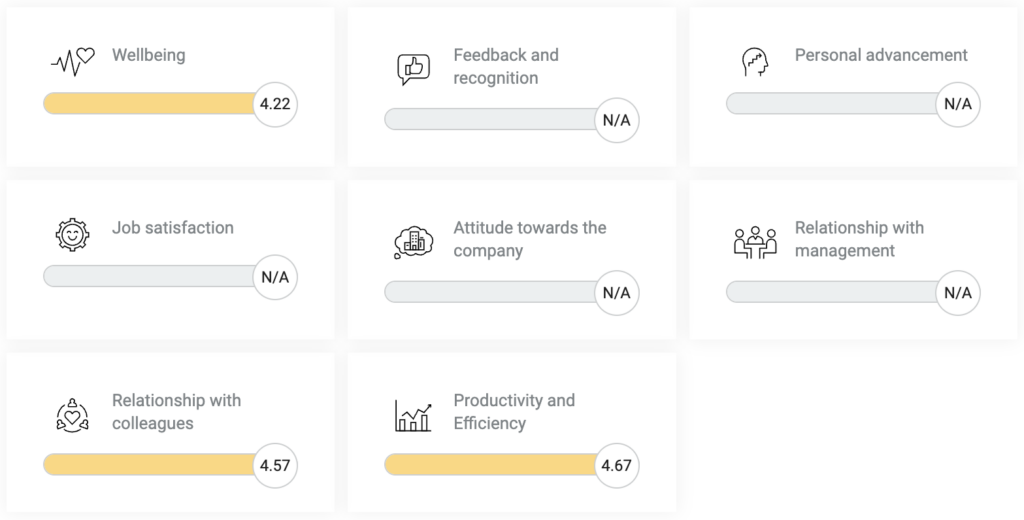
The 189 questions are rotated and combined through three-question surveys.
Questions are carefully curated with PhD specialists.
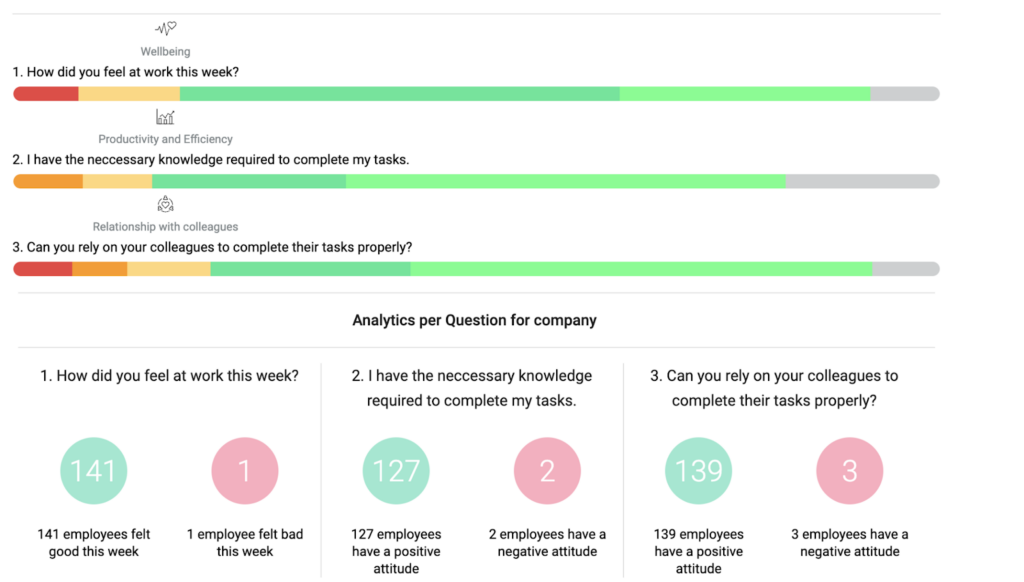
This gives HR professionals like you real-time data about their employees so that they can act promptly.
One-on-one meetings
Allow your employees to be heard. By regularly holding individual meetings with them, you can gather in-depth information about their feelings and job satisfaction in general.
This will give you a deeper understanding of their concerns and an upper hand in improving employee experience.

Peer reviews
57% of companies that introduced a peer recognition program reported increased engagement. Happy employees are often engaged with their team and acknowledge the efforts of their colleagues.
You can use peer recognition software, such as HeartCount, to gain insight into your employees’ praise and relationships with colleagues.
With HeartCount, employees can easily send and receive praises visible to everyone in the company.
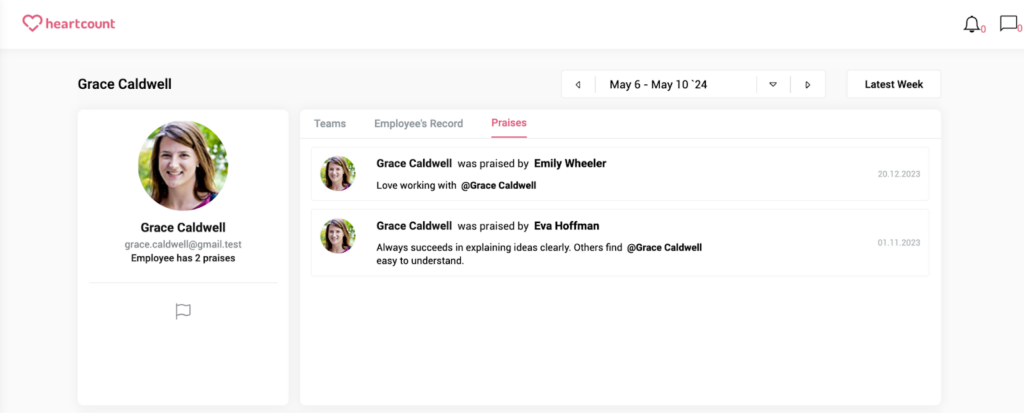
Improving employee happiness and engagement with technology
Ignoring employee happiness in the pursuit of engagement makes no sense. Prioritizing employee happiness leads to engagement naturally.
Even though many HR leaders struggle to precisely measure these factors, it doesn’t have to be burdensome.
Modern employee software, like HeartCount, can easily identify the main “drivers” behind happiness and engagement. Analyzing these drivers enables you to pinpoint areas for improvement in both employee engagement and happiness.






